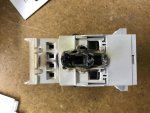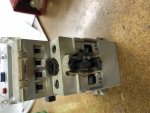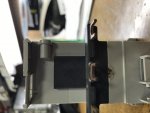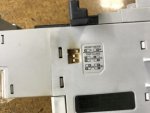rhamblin
Senior Member
- Location
- Kaukauna, Wisconsin
Attached are pictures of an overload unit that got hot. At first glance it would appear to be a loose connection on the B phase and as it loosened up it got warm. This runs a 40 HP pump. It was installed last summer and is used for the cooling of the building, so it didn't even run that much as we are in Wisconsin, and we don't cool that much in the winter. If you look closely you can still see a piece of the #6 AWG wire in the lug. The copper wire actually got so hot that it appears to have melted (separated just outside of the lug). The interesting thing is that 6 inches down the conductor from this point, the insulation was still flexible. The overload, I'm told never tripped and was never reset. So in my mind the wire got really hot, enough to melt the copper into to pieces, but not stay hot long enough to transfer any heat to further down the conductor. Any thoughts what would cause all of this? Someone mentioned lightning, which kind of makes sense as this combination starter is the shortest run from our 3000 amp service. But this was the only damage. If it were lightning, I would expect to see the lightning finding a path to ground somewhere. Any thoughts are appreciated.






